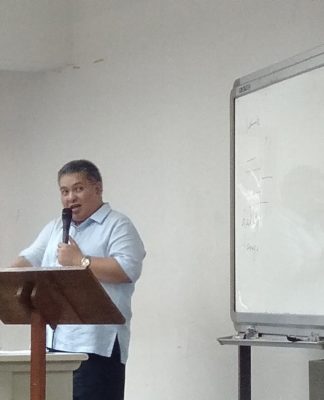After holding off major infrastructure projects during its first two years and generally plunging everything to a stasis, the Aquino government has come up with a lavish public works budget that comes uncannily too close to next year’s national and local elections.
It has proposed a P407.4-billion budget for infrastructure in 2013, for the construction of roads and railways, rehabilitation of rivers, and the formulation and execution of a flood control master plan.
Included in the budget are road extensions and bridge rehabilitations across the country; the construction of international airports in Bicol and Bohol; repair and rehabilitation of Angat Dam and dikes; and the construction of the LRT Line 2 and MRT 3 extensions.
In particular, P351-billion budget will be solely for flood management, following the deluge last month brought by monsoon rains that submerged most areas of the Metro Manila and Luzon. The rehabilitation of major drainages and distant rivers in Manila, such as the Manggahan floodway and Cainta-Taytay and Valenzuela-Obando-Meycauayan connection rivers are eyed to be finished in 2035.
“It is necessary for us to develop infrastructure across the country, if we want the Philippines to become a top destination for investments and tourism,” Aquino said during his 2013 Budget message to the 15th Congress last July 24. “The DPWH is now more equipped to undertake project design, cost review, procurement, and the supervision of infrastructure projects for other government agencies.”
Moreover, Aquino, in his attempt to strengthen disaster preparedness and risk reduction, said P7.5 billion will go to the calamity fund while P405 million will be provided to the Philippine Atmospheric, Geophysical and Astronomical Services Administration for “improved and timely weather forecasts.”
The sums are spectacular and government’s penchant for extravagant futuristic projects has made it overlook cheaper alternatives in solving the worsening environmental and disaster problems that have continuously crippled the nation.
In the first place, is the government truly following a “blueprint” in developing the overall landscape of the country, particularly Metro Manila? Previous administrations had came up with expensive projects to address perennial problems that didn’t amount too much.
Many of the solutions preferred by government are often long-term and thus, very expensive, and try to make up for the short-sightedness and lack of forward planning of previous administrations. It is also true that government would like to set itself off against the previous administrations, so it would refuse follow-throughs of previous projects and come up with its own ambitious projects. None of the projects could be finished within six terms of a sitting administration.
Considering that heavy rains would be the order of the day for the next few years, there’s need for swift solutions to relieve at least the perennial flood problems. But government is promising ambitious and expensive projects that would arrive decades from now.
Moreover, government seems impervious to the fact that it is exactly its own sins of commission and omission that have caused the flood problem to worsen. It has not implemented zoning rules and it has allowed private developers to build over creeks and catchments that would have nature’s way of draining floods out of territories.
Progressive infrastructure equates with progressive economy. The government should formulate strategic short-term goals to deal with the flood emergency. Most importantly, progressive and continuous planning must be practiced to end the vicious cycle of disasters and emergencies.














